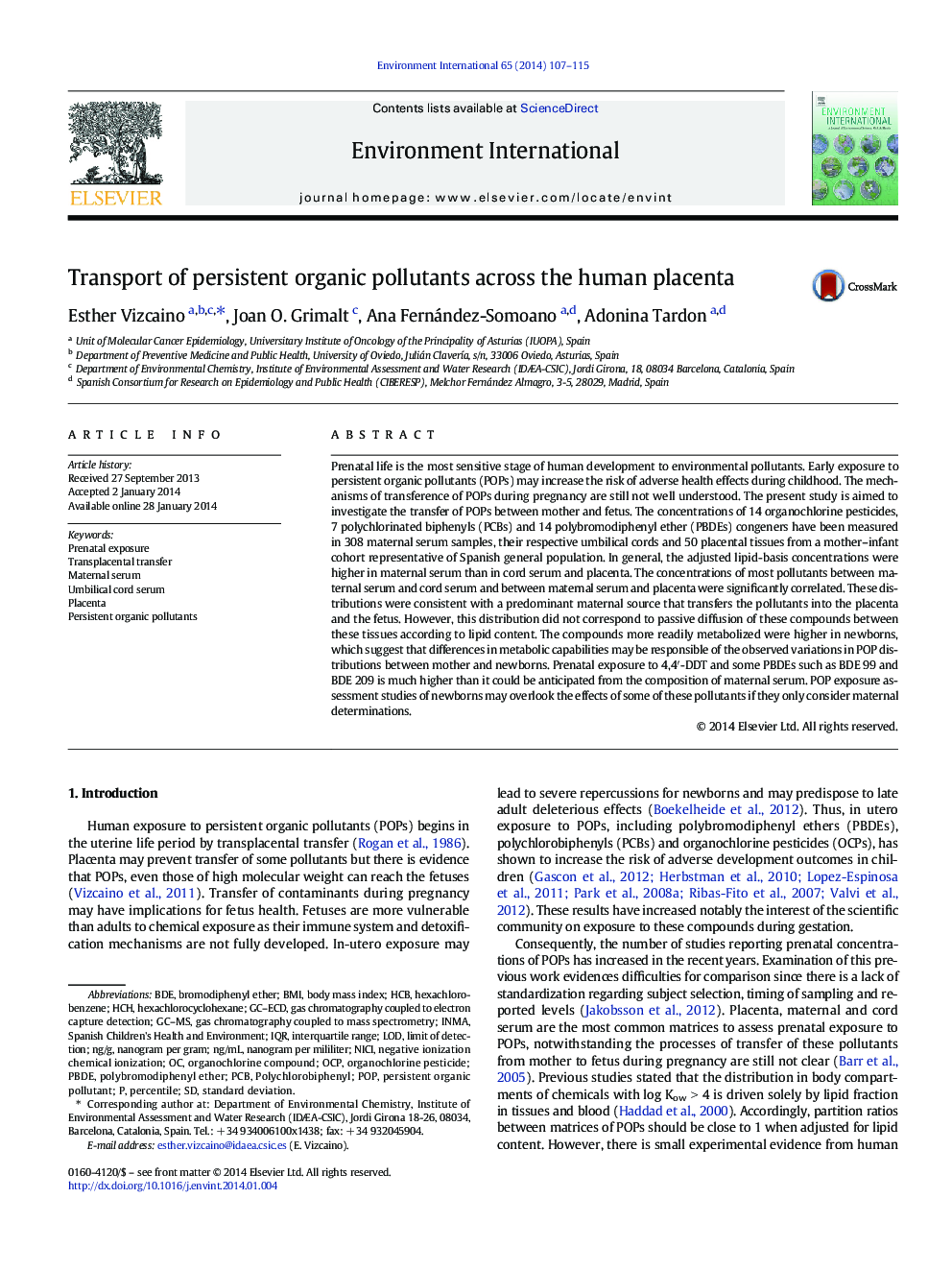| کد مقاله | کد نشریه | سال انتشار | مقاله انگلیسی | نسخه تمام متن |
|---|---|---|---|---|
| 4422811 | 1619063 | 2014 | 9 صفحه PDF | دانلود رایگان |
• The concentrations of most POPs in placenta, maternal and cord serum are correlated.
• A predominant mother-to-fetus pollutant transfer is observed.
• Pollutant transfer does not respond to a passive lipid-associated diffusion.
• Immature fetal metabolism leads to higher POP accumulation in newborns.
• The degradable PBDEs are in higher concentrations in fetal than maternal serum.
Prenatal life is the most sensitive stage of human development to environmental pollutants. Early exposure to persistent organic pollutants (POPs) may increase the risk of adverse health effects during childhood. The mechanisms of transference of POPs during pregnancy are still not well understood. The present study is aimed to investigate the transfer of POPs between mother and fetus. The concentrations of 14 organochlorine pesticides, 7 polychlorinated biphenyls (PCBs) and 14 polybromodiphenyl ether (PBDEs) congeners have been measured in 308 maternal serum samples, their respective umbilical cords and 50 placental tissues from a mother–infant cohort representative of Spanish general population. In general, the adjusted lipid-basis concentrations were higher in maternal serum than in cord serum and placenta. The concentrations of most pollutants between maternal serum and cord serum and between maternal serum and placenta were significantly correlated. These distributions were consistent with a predominant maternal source that transfers the pollutants into the placenta and the fetus. However, this distribution did not correspond to passive diffusion of these compounds between these tissues according to lipid content. The compounds more readily metabolized were higher in newborns, which suggest that differences in metabolic capabilities may be responsible of the observed variations in POP distributions between mother and newborns. Prenatal exposure to 4,4′-DDT and some PBDEs such as BDE 99 and BDE 209 is much higher than it could be anticipated from the composition of maternal serum. POP exposure assessment studies of newborns may overlook the effects of some of these pollutants if they only consider maternal determinations.
Journal: Environment International - Volume 65, April 2014, Pages 107–115
